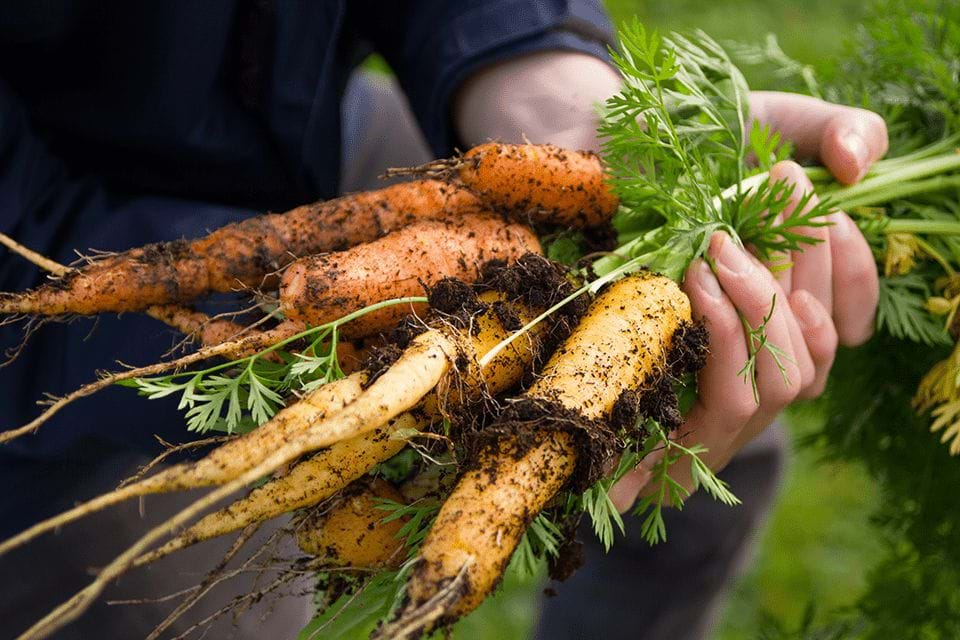Soil stores a huge amount of carbon, but unsustainable farming practices have resulted in loss of soil organic matter worldwide. This trend can be reversed by using regenerative carbon farming practices.
Carbon farming refers to farming that, alongside food production, increases soil carbon sequestration and storage in arable land. Increasing the carbon content of soil is a win-win strategy that helps to restore degraded soils and remove carbon dioxide from the atmosphere while increasing yields and profits.
PRACTICES TESTED ON THE CARBON ACTION FARMS
To find out which farming practices truly increase soil carbon content in different settings, farmers participating in Carbon Action are testing different farming practices.
The practices used on the Carbon Action farms include spreading organic matter like manure or compost on the field, shifting cultivation to favour crops that allocate more carbon to the soil, and using off-season cover crops. Mixtures including different grass species help to increase the diversity of the cultivated grass fields.
Cover crops and deep-rooted plants
Cover crops are used to manage soil erosion, increase soil fertility and quality, improve the water cycle, manage weeds and pests, and increase biodiversity. Deep-rooted plants transport carbon to deeper soil layers.
Subsoiling
Subsoiling is a method to turn, break, or stir the soil to improve growth in plots where soil compaction is a problem. Mending compacted soil is a crucial first step in turning it into a carbon sink.
Organic soil amendments
An organic soil amendment is a material such as compost, wood pulp and ramial wood chips, that aids plant growth indirectly by improving the condition of the soil. The material becomes food for microbes that sequester carbon and improve nutrient cycling.
Ley farming
Ley farming refers to the growing of grass or legumes in rotation with grain or crops as a soil conservation measure. Grasses increase soil carbon content, while legumes are known especially for their ability to increase the amount of nitrogen in the soil.
Adaptive grazing
Adaptive grazing mimics the patterns of wild migrating herds. The farmer carefully controls livestock density and how long a particular pasture or paddock is grazed at one time. By eating the vegetation only partially and disturbing the soil lightly with their hooves, the animals help the soil sequester a significant amount of carbon.
